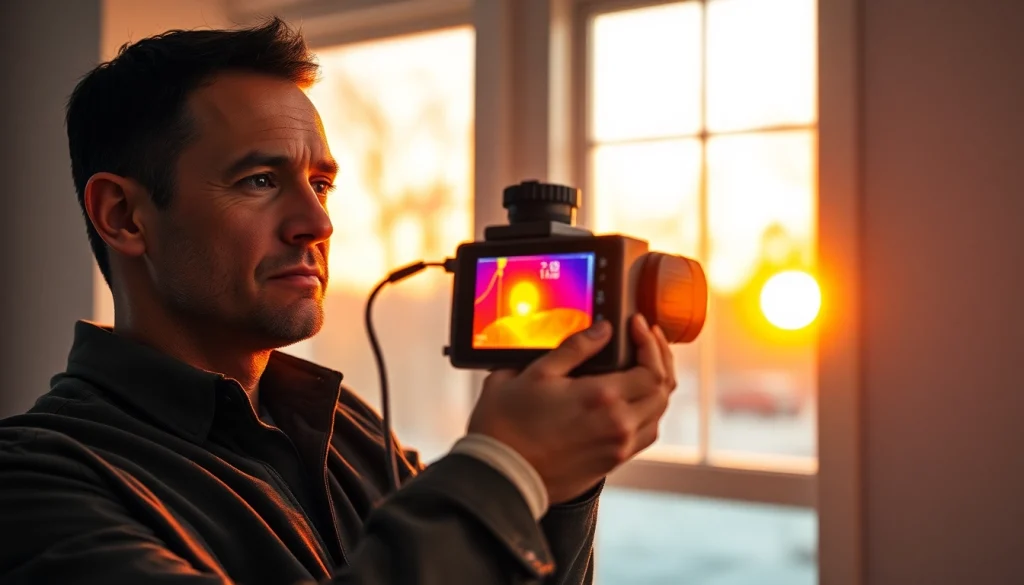Understanding Thermal Imaging Leak Detection
What is Thermal Imaging?
Thermal imaging, also known as infrared thermography, is a technique that utilizes infrared cameras to visualize and quantify thermal energy emitted from objects. This method captures temperature variations by converting them into visual images, allowing users to see differences in temperature across surfaces. The technology is prevalent in various fields, including electrical inspections, building diagnostics, and, notably, leak detection. By employing a Thermal Imaging Leak Detection approach, professionals can identify moisture behind walls, floors, and ceilings without invasive methods.
Significance of Thermal Imaging Leak Detection
The importance of thermal imaging in leak detection cannot be overstated. Traditional methods often require guesswork, causing unnecessary damage to walls or floors to find the source of a leak. In contrast, thermal imaging allows for rapid identification of moisture without damaging the structures. This non-invasive approach is not only more efficient but also cost-effective in the long run. Leaks can lead to bigger problems, such as mold growth and structural damage, which can be significantly mitigated through early detection.
How It Works: The Science Behind Thermal Imaging
Thermal imaging operates on the principle that different materials and conditions emit varying levels of infrared radiation. When water leaks into an area, it affects the temperature of surrounding materials, creating a thermal anomaly. By scanning the suspected areas and analyzing the thermal images, professionals can pinpoint where the leak is likely occurring. The process typically involves comparing the thermal images to known temperature benchmarks, enabling accurate identification of leaks even in hard-to-reach areas.
Identifying Common Leak Issues with Thermal Imaging
Typical Areas for Water Leakage
Water leaks can occur in numerous areas within a building. Common sites for leakage include:
- Roofs: Deterioration, cracks, and faulty flashing can lead to water penetration.
- Walls: Poor insulation or damage can allow moisture to seep in.
- Basements: Groundwater and plumbing leaks often manifest in these lower levels.
- Windows and Doors: Gaps can allow rainwater to infiltrate a building.
- Pipes: Bursting or corroded plumbing can lead to significant leaks.
Signs Indicating a Possible Leak
Homeowners should be vigilant for various signs that may indicate the presence of a leak. Common indicators include:
- Water stains on ceilings or walls.
- Increased utility bills without a corresponding increase in usage.
- Mold or mildew growth.
- Peeling paint or warped materials.
- A musty odor within the home.
Benefits of Early Detection
The advantages of early detection of leaks cannot be emphasized enough. Identifying leaks quickly can prevent extensive damage, leading to substantial savings on repairs. Early detection can also improve indoor air quality by reducing mold growth, which can have severe health implications for residents. Furthermore, by using thermal imaging for preventative inspections, property owners can maintain the integrity of their structures and avoid costly emergency repairs caused by overdue leak problems.
Best Practices for Effective Thermal Imaging Leak Detection
Preparing Your Space for Inspection
Before conducting a thermal imaging inspection, it is crucial to prepare the area effectively. This preparation encompasses several steps:
- Clear the spaces where leaks are suspected to ensure unobstructed access.
- Conduct a visual inspection of the area for signs of water damage or other indicators.
- Ensure that the space has been free from significant external temperature variables, such as direct sunlight or excessive wind, as these can skew results.
Tools and Equipment Needed
The success of thermal imaging leak detection heavily relies on the quality of equipment used. Essential tools may include:
- High-quality thermal imaging camera with appropriate resolution.
- Personal protective equipment and clothing for safety.
- Measuring tools for additional quantitative analysis.
- Access to software that can analyze and interpret thermal data.
Conducting a Thorough Inspection
A meticulous approach to conducting inspections is vital for accurate results. Inspectors should move the thermal imaging camera systematically through the suspected areas, allowing for proper scanning and image capture. It is vital to pay attention to temperature gradients, noting any unusual hot or cold spots which could indicate moisture presence. The collected thermal images should be analyzed using appropriate software to identify significant trends and draw conclusions about potential leaks.
Advanced Techniques in Thermal Imaging Leak Detection
Using Advanced Cameras and Software
The advancement of technology has led to the development of sophisticated thermal imaging cameras and software that enhance leak detection efforts. Modern equipment may offer features such as:
- Enhanced resolution for clearer, more detailed images.
- Integrated measurement systems for real-time data assessment.
- Software capabilities for creating detailed reports and recommendations based on the findings.
Integrating Thermal Imaging with Other Detection Methods
While thermal imaging is a powerful tool, integrating this method with other leak detection methods can lead to more accurate results. For instance, combining thermal imaging with moisture meters can validate findings and clarify ambiguous data points. Traditional visual inspections can also supplement thermal scans, ensuring no detail goes unnoticed. Cross-referencing detected anomalies can provide a comprehensive data set for precise leak identification.
Case Studies of Successful Detection
Numerous case studies illustrate the efficiency of thermal imaging in leak detection scenarios. For example, one case involved a commercial property suffering from unexplained water damage. By employing thermal imaging, inspectors were able to identify a hidden leak in the HVAC system, which was promptly repaired. The result was significant savings on repair costs and enhanced comfort for building tenants. Another residential case involved detecting moisture behind wall insulation, preventing mold growth through swift intervention. These examples underscore the value and effectiveness of thermal imaging as a leak detection tool.
Measuring the Effectiveness of Thermal Imaging Leak Detection
Key Performance Indicators
Assessing the effectiveness of thermal imaging leak detection can be achieved by monitoring key performance indicators (KPIs). These metrics can include:
- Time taken to detect and address leaks after an inspection.
- Reduction in repairs and maintenance costs compared to traditional methods.
- Frequency of detecting recurring issues after initial interventions.
- Feedback from clients regarding the thoroughness and results of the inspection process.
Comparing Cost-Effectiveness with Other Methods
When evaluating cost-effectiveness, thermal imaging often stands out compared to traditional leak detection methods. Although the initial investment in thermal imaging technology may be higher, the long-term benefits and cost savings on repairs can significantly outweigh these costs. Traditional methods often lead to unforeseen damage requiring extensive repairs, while thermal imaging minimizes such risks by ensuring accuracy and efficiency from the outset.
Feedback and Continuous Improvement in Techniques
Continuous improvement is essential in any technical field, including thermal imaging leak detection. Feedback from both clients and technicians can facilitate enhanced methods and strategies. Regularly updating training for technicians on the latest technology and detection techniques can further contribute to effectiveness. Additionally, analyzing the success and shortcomings of past inspections helps refine future processes, leading to better results and satisfied clients.



